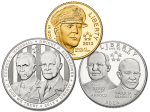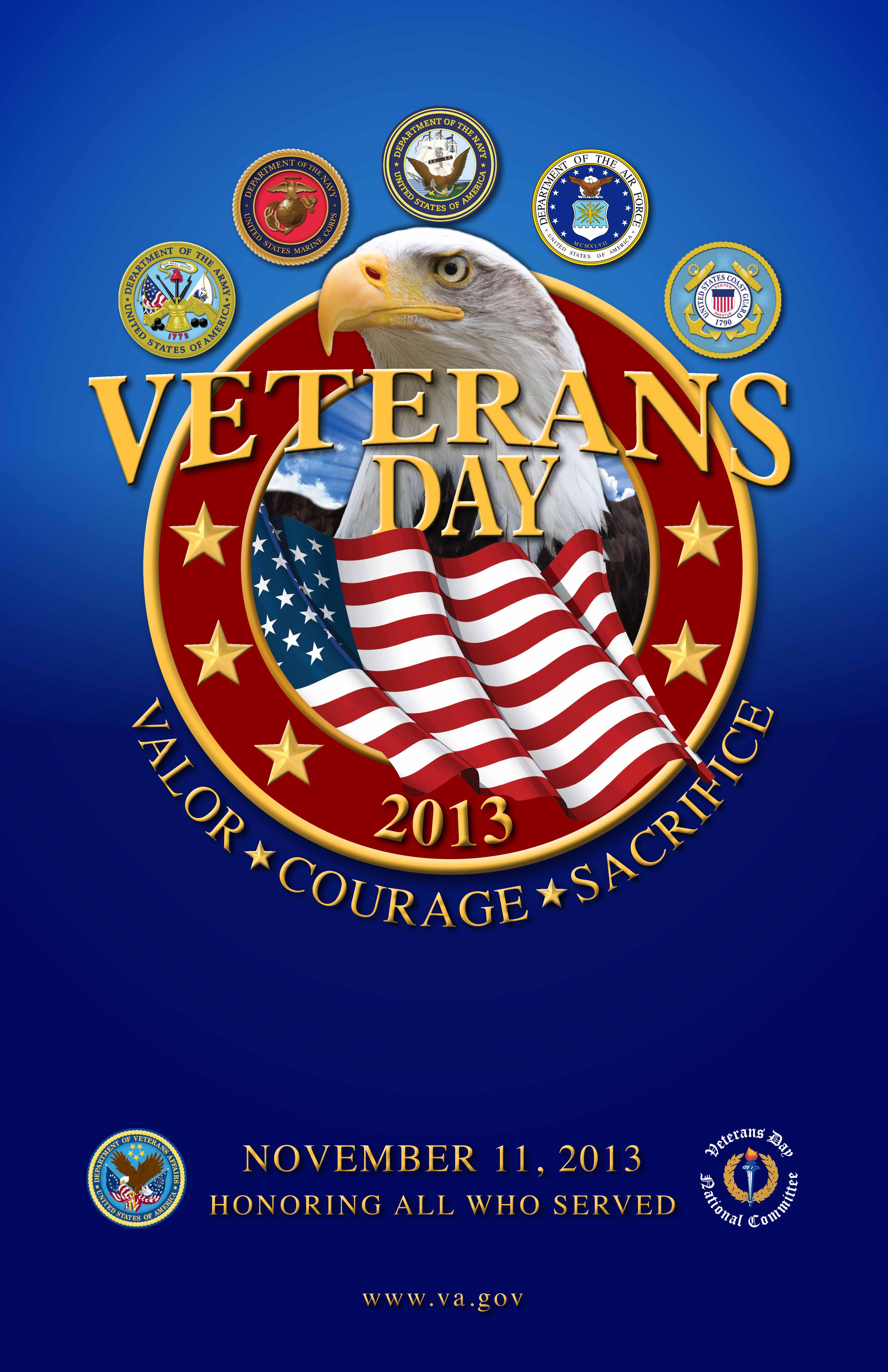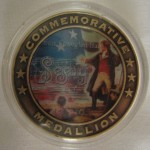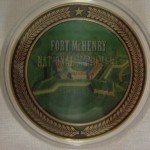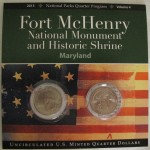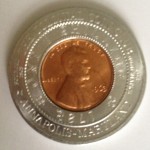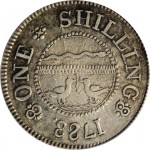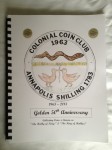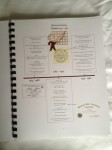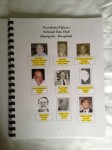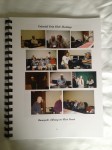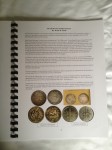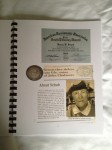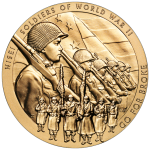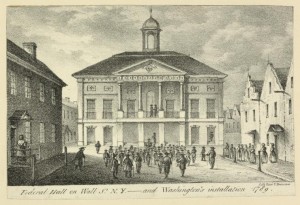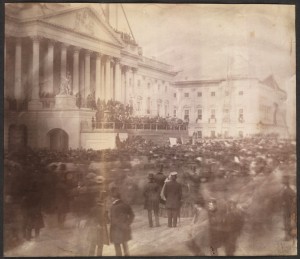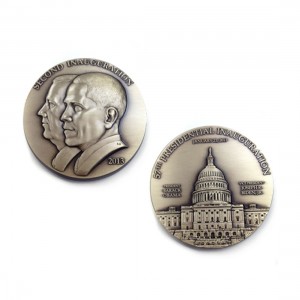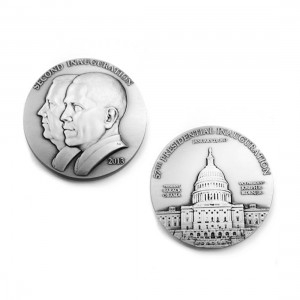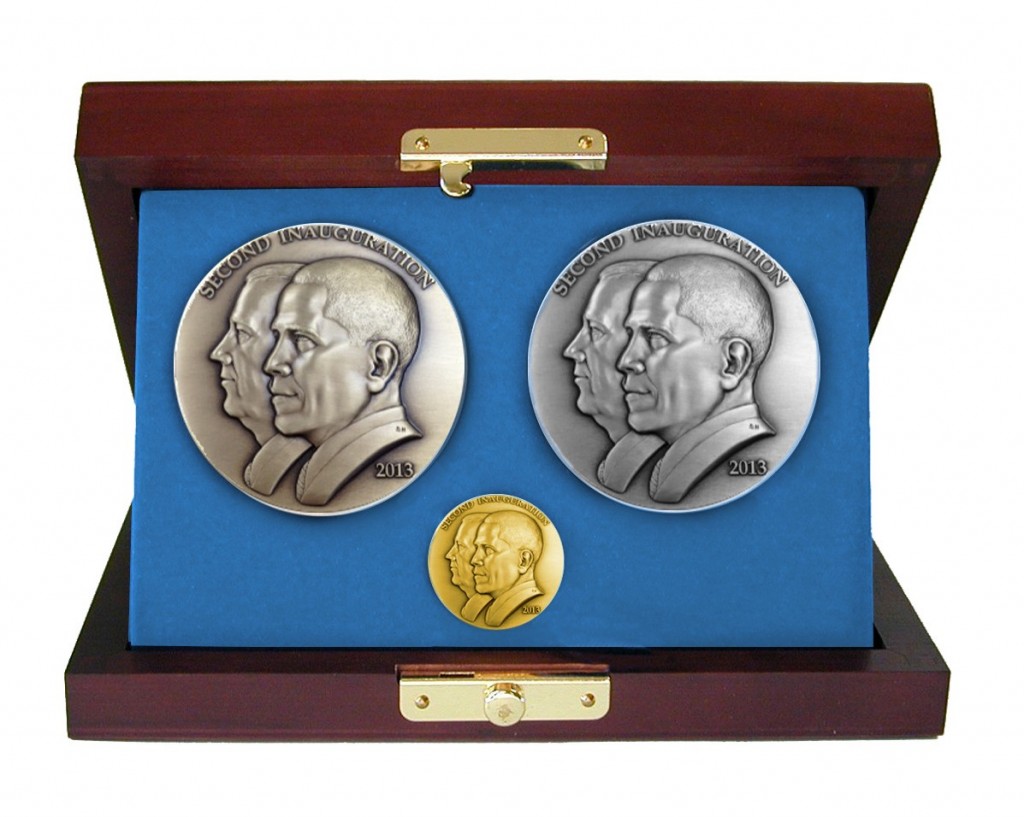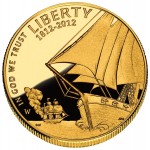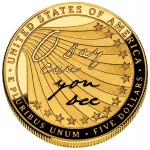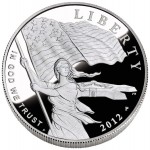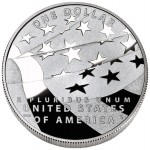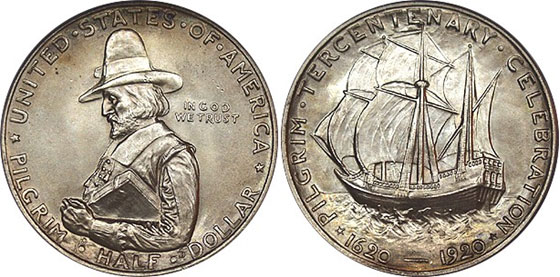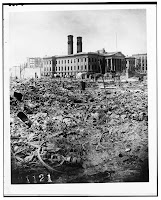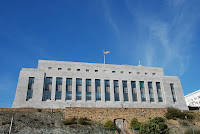11/11/2013
To all that have given the ultimate sacrifice…
To the families of these honored service members…
Defenders Day at Fort McHenry
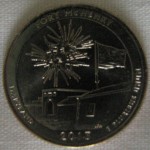 On Monday, September 12, 1814 the British invasion fleet landed at North Point in Baltimore and tried to capture Baltimore by attacking Fort McHenry. Before the attack on Baltimore, the British marched through Washington, D.C. and burned the capital building. On their march to Baltimore, the British took Dr. William Beanes as a prisoner for his role in capturing British stragglers and deserters. Beanes was imprisoned in Baltimore as the Royal Navy gathered forces for their attack on Fort McHenry in Baltimore Harbor.
On Monday, September 12, 1814 the British invasion fleet landed at North Point in Baltimore and tried to capture Baltimore by attacking Fort McHenry. Before the attack on Baltimore, the British marched through Washington, D.C. and burned the capital building. On their march to Baltimore, the British took Dr. William Beanes as a prisoner for his role in capturing British stragglers and deserters. Beanes was imprisoned in Baltimore as the Royal Navy gathered forces for their attack on Fort McHenry in Baltimore Harbor.
Word of Beanes’s capture reached Francis Scott Key, an accomplished lawyer, prosecutor, poet, and friend of Dr. Beanes. Key, who was known as a skilled negotiator and a very temperate man, was asked by the Army to accompany prisoner exchange agent Colonel John Stuart Skinner to Baltimore to secure the release of Dr. Beanes. On September 7, 1814, Key and COL Skinner dined with British officers abroad the HMS Tonnant to negotiate the release of prisoners. Although Beanes was released, the British would not let the men leave the ship because they had heard about the British plans to attack Fort McHenry.
Key, Skinner, and Beanes watched as the Royal Navy bombarded the fort and surrounding areas of Baltimore. As the smoke cleared on the morning of September 14, 1814, after 25-hours of bombardment, Key was able to see the U.S. flag still flying over Fort McHenry. Key was so moved by the sight that after returning home, he wrote the poem “The Defence of Fort McHenry.” The poem was published in the Baltimore Patriot on September 20, 1814.
Following the War of 1812, Baltimoreans celebrated the victory every year on September 12 but did not gain statewide recognition until the centennial celebration in 1914, even though the celebration was overshadowed by World War I. Celebrations waned during the Great Depression until it became an official holiday in 1957. Defenders Day would become popular again in the 1980s with the help of the National Park Service and the Fort McHenry Guard.
- Obverse of the Fort McHenry Commemorative Medallion for sale at the gift shop.
- Reverse of the Fort McHenry Commemorative Medallion for sale at the gift shop.
This year, Defenders Day was celebrated on Friday, September 13. With a crowd of area students, area residents, dignitaries, and members of the Maryland State Numismatic Association, the Defenders Day celebration kicked off at Fort McHenry with the launch ceremony of the Fort McHenry National Monument and Historic Shrine quarter.
With Ranger Bailey as the master of ceremonies, the program features Park Superintendent Tina Cappetta, Maryland Senator Ben Cardin (D), Representative John Sarbanes (D) whose district includes Fort McHenry, Representative C.A. “Dutch” Ruppersberger (D) whose district covers parts of Baltimore not in Sarbanes’ district, Baltimore Mayor Stephanie Rawlings-Blake (D), and Treasurer of the United States Rosie Rios.
Speeches were interspersed with a performance from the Notre Dame Prep (Towson, MD) Choir, ceremonial drills from the Fort McHenry Guard, and the Fort McHenry Fife and Drum Corps. Prior to end of the ceremony, Treasurer Rosie Rios presented a special plaque with examples of the Fort McHenry Quarters to Superintendent Cappetta.
The ceremony ended with the dignitaries on the stage pouring a bucket of quarters into a old ammunition box.
Following the ceremony the dignitaries handed out quarters to to the students who sat through the ceremony. These children were attentive and appreciative of the ceremony and the quarter.
Clearly, the most popular person giving out quarters was Mayor Rawlings-Blake of Baltimore. Rawlings-Blake is a native of Baltimore, mother, and younger than the other politicians in attendance. It was clear that she connected better with the students than the other politicians.
After the quarters were handed out, the students toured the park visiting the various stations setup to teach them about why Maryland celebrates Defenders Day.On my way out of the park, I made the obligatory stop in the gift shop. Surrounded by students having fun looking at the items for sale, I found a card issued by the National Park Service with the Fort McHenry quarters commemorating the fort. The back of the card says that a portion of the proceeds are donated to the National Park Conservation Alliance. I also purchased a commemorative medal with a hologram on both sides. The images on the obverse commemorate the Star-Spangled Banner while the reverse shows the fort.
Not a bad way to spend the morning in Baltimore before having to return to work.
Colonial Coin Club celebrates 50 years and counting
Sometimes it is fun serving as an officer for a coin club or a regional organization. The past week I had the honor to represent the Maryland State Numismatic Association as its vice president at the 50th anniversary celebration of the Colonial Coin Club of Annapolis, Maryland.The Colonial Coin Club was founded in 1963 by members of the Baltimore Coin Club who commuted to meetings from Annapolis. While not that far of a commute, these members felt there was enough interest to form their own local club. The first meeting of the Colonial Coin Club was March 19, 1963. Fifty years later they are still a vibrant club serving collectors in the Annapolis area.
With my busy schedule, not only did I welcome the one night diversion to join the celebration at a nice restaurant in Gambrils, Maryland, but I had a chance to speak to congratulate them, encourage them to continue their good work for the next 50 years and beyond, and invite them to participate with the state organization and to visit the club I am president of, the Montgomery County Coin Club.
Colonial Coin Club has quite a history serving collectors in the eastern part of Maryland. Although Baltimore may be Maryland’s largest city, the areas around the Chesapeake Bay is the birthplace of the original Maryland colony. Although the Calvert family settled into what we now know as Baltimore, Annapolis was the colony’s economic hub. Amongst Annapolis’s residents was Jonas Green who became the colony’s official printer. Green served as an apprentice and worked for Benjamin Franklin in Philadelphia.
Green died in 1767 around the time that the colonial government was issuing its first currency. Taking over the printing business was his wife Anne Catherine Green making her the first woman to publish a newspaper in the colonies. Because of the social stigmas against women in these types of position, she printed her name as A.C. Green.
Drawing on the history of the Maryland colony, the Colonial Coin Club uses the 1783 John Chalmers shilling as part of its logo. Chalmers, who was a silversmith by trade, served as a captain in the Continental Army, was a representative to the common council of Annapolis, and was once the sheriff of Baltimore. As a civic-minded entrepreneur, Chalmers seized on the new law in Maryland that ended the practice of issuing paper money and the shortage of specie to propose a new coinage system. Chalmers created several prototypes that included the one shilling, three pence, and six pence coins. Chalmers’ shilling became the most famous of the his coins.The design of the Chalmers Shilling has been a matter of debate. Several references call the long animal depicted a worm while others call it a snake and the two birds as doves. Some claim the birds are fighting over the worm/snake and there is no speculation as to why the worm/snake is depicted over a hedge. If you consider Maryland’s history at the time, snakes were not as prevalent in the Annapolis area. Birds would be going after worms and the two birds, which could be doves, are not fighting but sharing the worm—a symbol of Chalmers trying to tell people to get along during the tense period of transition from being British subjects to a free country. Considering that the coins were designed by Thomas Sparrow, who also designed the Maryland currency when it was issued, The worm over the head was to show unity across the Maryland fields.
If nothing else, I am adding the speculation as to the meaning of the coin.
As part of the celebration, the club put together a nice book of their history with articles from their journals, members, press clippings, and images that also makes is a really nice modern scrapbook of the club. It is an impressive bit of work by Betty Meck, a past president of the club, with help from their current Secretary, club historian, and the member with the longest service to the club Hank Schab. Both of whom I had a pleasure to meet and want to make special note of their contributions.
Also attending was Will Mumford. Will is a past president of the Colonial Coin Club and archivist for the Maryland State Archives who wrote, Barter, Bits, Bills and Tobacco: The Story of Money in Early Maryland. Will also wrote Strawberries, Peas, and Beans about the Pickers Checks in Anne Arundel County.
For a good overview of picker checks, you can read Picker Checks, Currency of the crops [PDF] by Gilbert Sandler from the University of Baltimore archives.
Finally, I would like to thank Colonial Coin Club President Rod Frederick for inviting the Maryland State Numismatic Association to participate which allowed me to be there as their representative. I will be 103 when the club celebrates a century of serving the coin collectors of the Annapolis area. I hope they will invite me back to celebrate with them!
A few images of the Colonial Coin Club’s 50th Anniversary history and album:
Memorial Day 2013
Coin Collectors Blog supports:
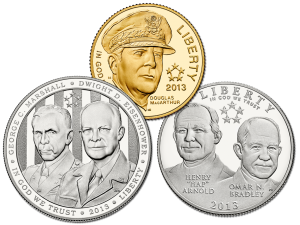 Decoration Day was first celebrated by Freedmen, freed southern slaves, May 1, 1865 in Charleston, South Carolina to honor the service of the 257 Union soldiers buried at the Washington Race Course. Today, Washington Race Course is known as Hampton Park.
Decoration Day was first celebrated by Freedmen, freed southern slaves, May 1, 1865 in Charleston, South Carolina to honor the service of the 257 Union soldiers buried at the Washington Race Course. Today, Washington Race Course is known as Hampton Park.
The next year, southern states began their own Memorial Days to honor their soldiers who died during the war. No specific date was used but occurred in late April through June. By 1880, there was a more organized Confederate Memorial Day. These celebrations honored specific soldiers to commemorate the Confederate “Lost Cause.”
In the north, the fraternal organization of Civil War veterans The Grand Army of the Republic began organizing Decoration Day celebrations in 1868. Decoration Day was the day to honor the fallen by decorating the graves of Union soldiers with flowers and flags.
Memorial Day did not take on national significances until after World War I. Rather than being a holiday to remember those of died in service during the Civil War, the nation began to recognize all those who gave the ultimate sacrifice during all conflicts. By the end of World War II, most of the celebrations were renamed from Decoration Day to Memorial Day. Memorial Day did not become an official holiday until 1967 and its date changed from the traditional May 30 to the last Monday of the month by the Uniform Holidays Act (Public Law 90-363, 5 U.S.C. § 6103(a)) in 1968.On this Memorial Day, I want to take this opportunity to remember those who gave the ultimate sacrifice while defending freedom at home and abroad. Whether it was wars for this country’s freedom, helping allies overseas, world wars, or helping others settle armed conflict around the globe, it is important we take this day to honor their service that helped make this country what it is today.
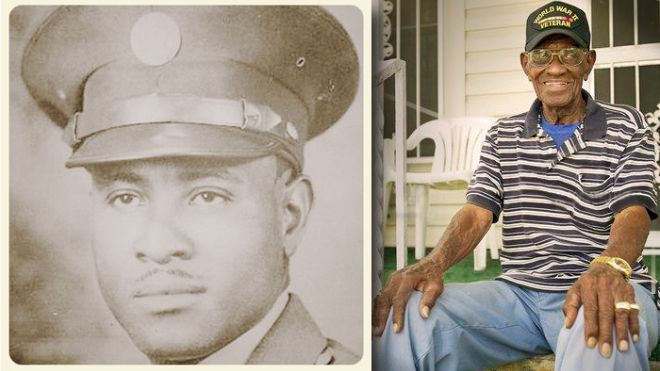
World War II veteran Richard Overton, left, is seen in his Army uniform in an undated photograph provided by the City of Austin. Overton, 107, sits outside his Texas home earlier this month. (AP/Austin American Statesman)
Coin images courtesy of the U.S. Mint.
Pictures of Richard Overton courtesy of FoxNews.com.
44, 57, & 43
Today was the ceremonial inauguration of Barack Obama for his second term as the 44th President of the United States. This is the 57th presidential inauguration in United States history. Obama is the 43rd person to hold the office of the presidency (Grover Cleveland served two non-consecutive terms).
The inauguration was held the day after the constitutionally mandated January 20th date because for the seventh time in history, the mandated date fell on a Sunday. Obama was inaugurated for his second term during a private ceremony held in the Blue Room of the White House.
Although the only part of the inauguration required by the constittution is the oath of office, all of the 57 presidential inaugurals have been as unique as the presidents and the times they served.
The first presidential inauguration was held on April 30, 1789 on the stairs of Federal Hall in New York City. New York City served as the temporary capital until the permanent capital in Washington, DC was built. Washington’s second inaugural address on March 4, 1793 in Philadelphia was 135 words, the shortest in history.Thomas Jefferson was the first president to be inaugurated in Washington, DC on March 4, 1801. Six presidents were not inaugurated in Washington, DC including Washington and John Adams. The last was Lyndon B. Johnson whose first inauguration was on in Dallas on Air Force One following the assassination of John F. Kennedy. Johnson was the first and so far only president to be sworn in by a woman, U.S. District Judge Sarah T. Hughes.
Presidential fashion was changed on March 4, 1825 when John Quincy Adams was the first to wear long pants rather than knickers.
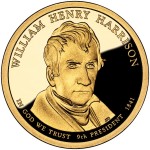
2009 William Henry Harrison Proof Obverse
Speaking of ascension to the presidency by the Vice President, this has happened nine times. Aside from Tyler being the first, the last and most significant was probably Gerald R. Ford, who was appointed Vice President under the provisions of the provisions of the 25th Amendment to the U.S. Constitution. This made Ford the only president not to be elected to national office.
Although the U.S. Constitution requires the president to be born in the United States, New York-born Millard Fillmore was the first president not to be born a British subject. Although Tyler was the governor of Tennessee, the first state that was not an original colony, Tyler was born in North Carolina which was an original colony. Kentucky-born Abraham Lincoln was the first president not born in one of the original 13 colonies. Obama was the first president to be born in Hawaii and the first not to be born in the continental United States.
The technology advances that have been added to inaugurals include the first time an inaugural was photographed was James Buchanan’s inauguration on March 4, 1857; William McKinley’s inauguration in 1897 was the first to be recorded using a motion picture camera; coordination of Theodore Roosevelt’s second inauguration was aided using newly installed telephones in the White House; Warren G. Harding was the first president to ride in an automobile to and from the ceremony in 1921; Calvin Coolidge’s 1925 inauguration was the first broadcast on radio; in 1929, Herbert Hoover’s inauguration was the first to be recorded on talking newsreel; Harry S Truman’s second inaugural in 1949 was the first to be broadcast on live television; and Bill Clinton’s second inauguration in 1997 was the first to be streamed live on the Internet.Washington, DC is not known to have the best weather. Even the moving of the inauguration from March 4 to January 20 by the 20th Amendment (effective with Franklin D. Roosevelt’s second inaugural) has not done much to change this. Rain plagued ten inaugurations. It snowed for seven inaugurations. Even though the warmest was 55-degrees for Ronald Reagan’s first inaugural on January 20, 1981, he experienced the coldest inauguration for his second go around on January 21, 1985 when the mercury was 7-degrees.
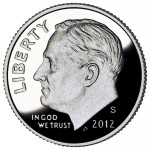 While Franklin D. Roosevelt was the only president to be inaugurated for four terms, Obama tied Roosevelt’s record for being the only presidents to receive the oath of office four times. Obama was given the oath of office a second time on January 20, 2009 after Chief Justice John G. Roberts, Jr. did not exactly get the words right the first time. This year, Roberts delivered the oath on January 20, 2013 as required by the constitution and then delivered it again on January 21 in a public ceremony.
While Franklin D. Roosevelt was the only president to be inaugurated for four terms, Obama tied Roosevelt’s record for being the only presidents to receive the oath of office four times. Obama was given the oath of office a second time on January 20, 2009 after Chief Justice John G. Roberts, Jr. did not exactly get the words right the first time. This year, Roberts delivered the oath on January 20, 2013 as required by the constitution and then delivered it again on January 21 in a public ceremony.
Finally, following the tradition of all presidents, the 2013 Presidential Inaugural Committee commissioned an official inaugural medal that was struck in bronze, silver, and gold. Struck by the Medalcraft Mint of Green Bay, Wisconsin. Medals are available in bronze, silver, and gold. If you sign up for their mailing list, you will receive a code for discounts that can be applied to purchases. The last code I received was “2013” to take 15-percent off your order, but that could change as time passes.
- Inaugural Medal images courtesy of Presidential Inaugural Committee 2013.
- Washington Inauguration at Federal Hall image courtesy of the New York Public Library.
- Coin images courtesy of the U.S. Mint.
- Photograph of James Buchanan Inauguration courtesy of Wikimedia Commons.
2013
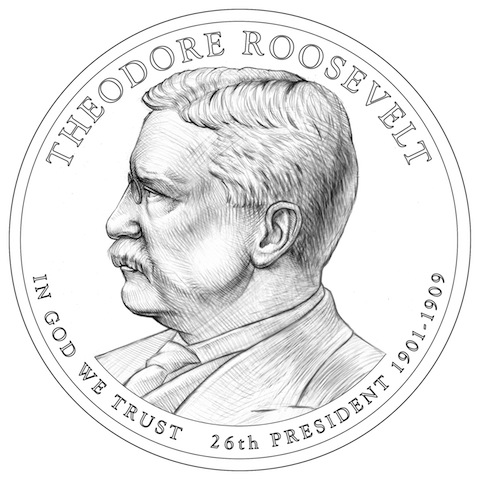
Line Art of the 2013 Theodore Roosevelt Dollar designed and engraved by U.S. Mint Sculptor and Engraver Joseph Menna
Last Chance for Star-Spangled Banner Commem
 As we come down to the home stretch of the 2012 products, let me put in a word for the 2012 Star-Spangled Banner Commemorative Coins. Proceeds from the sale of these coins ($35 for the gold coin and $10 for the silver dollar) goes to the Maryland War of 1812 Bicentennial Commission to support their bicentennial activities, educational outreach, and preservation and improvement of the sites and structures related to the War of 1812, a war that has been called our second war for independence.
As we come down to the home stretch of the 2012 products, let me put in a word for the 2012 Star-Spangled Banner Commemorative Coins. Proceeds from the sale of these coins ($35 for the gold coin and $10 for the silver dollar) goes to the Maryland War of 1812 Bicentennial Commission to support their bicentennial activities, educational outreach, and preservation and improvement of the sites and structures related to the War of 1812, a war that has been called our second war for independence.
The design of the 2012 Star-Spangled Banner commemorative coins enhance the depiction of liberty and the fight for freedom that should be the hallmark of U.S. coin designs. The gold coin features a naval battle scene representing the victory in Baltimore Harbor over the Royal Navy in defending Fort McHenry and the reverse has the first words of Francis Scott Key’s poem, “The Defence of Fort McHenry.”
While the gold coin is a nice design, the design of the silver coin is even better. The obverse depicts Lady Liberty waving the 15-star, 15-stripe Star-Spangled Banner flag with Fort McHenry in the background. It is a powerful image representing one of the best designs representing freedom and liberty. The reverse is a modern 50-star flag waving. Images (included below) does not do this coin justice. You have to see this coin in hand to appreciate the design.
It is always fascinating to see how the U.S. Mint works behind the scenes and hear from the designers and engravers. Philadelphia’s WPVI-TV went to the Philadelphia Mint to see how the 2012 Star-Spangled Banner commemorative coins are made. Here is their report:
In related news, it was announced that the Navy’s heralded Blue Angels will perform in Baltimore for the finale of the War of 1812 commemoration September 12-13, 2014. The Blue Angles will appear during the Star-Spangled Spectacular that will be held September 6-14, 2014 in Baltimore.
Buying the coins will not only add a beautiful coin to your collection but will help support the celebrations of the bicentennial of these important events in United States history. I bought the silver proof coin at Fort McHenry during the launch event.
The Coins:
- 2012 Star-Spangled Banner Gold Commemorative Obverse depicts a naval battle scene from the War of 1812, with an American sailing ship in the foreground and a damaged and fleeing British ship in the background. Designed by Donna Weaver and engraved by Joseph Menna.
- 2012 Star-Spangled Banner Gold Commemorative Reverse Depicts the first words of the Star-Spangled Banner anthem, O say can you see, in Francis Scott Key’s handwriting against a backdrop of 15 stars and 15 stripes, representing the Star-Spangled Banner flag. Designed by Richard Masters and engraved by Joseph Menna.
- 2012 Star-Spangled Banner Silver Commemorative Obverse depicts Lady Liberty waving the 15-star, 15-stripe Star-Spangled Banner flag with Fort McHenry in the background. Designed by Joel Iskowitz and engraved by Phebe Hemphill.
- 2012 Star-Spangled Banner Silver Commemorative Reverse depicts a waving modern American flag. Designed by William C. Burgard III and engraved by Don Everhart.
Scott’s coin:
- Logo courtesy of the Maryland War of 1812 Bicentennial Commission.
- Video courtesy of WPVI-TV, Philadelphia.
- Coin images courtesy of the U.S. Mint.
- Image of Scott’s coin is owned by the author and covered under CC BY-NC-ND 3.0 license.
Thanksgiving 2012
After arriving in the New World in 1620, the Pilgrims celebrated their first harvest in 1621. The three-day even was attended by 53 Pilgrims and 90 Native Americans that lasted three days. The tradition of giving thanks for successes was a tradition that the Pilgrims brought with them from England. This three-day celebration in 1621 is considered the first Thanksgiving.
Thanksgiving was celebrated during many different times within the colonies, mainly to give thanks for something that was honorable to the colony or the locality that observed the celebration. The first national recognition of a Thanksgiving celebration came when General George Washington declared December 1777 as Thanksgiving honoring the defeat of the British at Saratoga. As President, George Washington declared the first national Thanksgiving celebration on November 26, 1789. The only other president to issue a Thanksgiving proclamation was President James Madison. From then, it was up to the individual states to declare a Thanksgiving holiday.
As part of his attempt to maintain the union, President Abraham Lincoln issued a proclamation that made Thanksgiving Day a national annual event on the last Thursday in November beginning in 1863.
Thanksgiving remained the last Thursday of November until 1939 when he declared Thanksgiving to be on the fourth Thursday of the month to give merchants more time to sell good during the Christmas shopping season. Congress passed a joint resolution in 1942 fixing Thanksgiving to the fourth Thursday of November.
In 1947, the National Turkey Federation has provided the President of the United State with one live turkey and two dressed turkeys. President Harry Truman is credited with pardoning the first turkey in 1947 but it did not become a tradition until President Ronald Reagan started in 1987 and continued by President George H.W. Bush in 1989. Since 1989, the pardoned turkeys have lived the rest of their lives at Frying Pan Park in Herndon, Virginia. Those pardoned by President Obama have gone to live at George and Martha’s old place in Mount Vernon, Virginia.
by Roger J. Robicheau
Our family, our friends, pure delight
A caring kiss with a gentle smile
Each tender hug lasts that country mile
The presence of love so fills the air
This gift of God brings our hearts so near
Reflections of past bring nurtured thought
Great visions come by, what life has taught
In thankful ways we embrace this day
And often think of loved ones away
Those serving us proud are often gone
But their spirit remains, closely drawn
Our Nation should praise each special one
For all we have is through what they’ve done
The freedom to have Thanksgiving Day
Keeps certain plates bare, please truly pray
Coin image courtesy of Coin Update
Fighting for Independence 36 Years Later
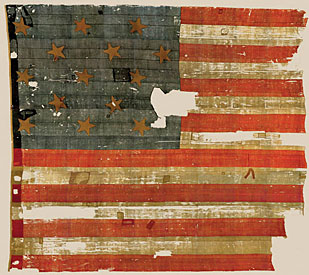
The original Star-Spangled Banner, the flag that inspired Francis Scott Key to write the song that would become our national anthem.
President James Madison, embroiled in a tight campaign for re-election, acquiesced to Congressional “war hawks” from the south and west and declared war on Britain in June 1812. Americans were emboldened by the fact that the British were deeply committed to a war with Napoleon Bonaparte that strained the resources of the crown. There was little acknowledgement in Washington that what passed for a standing army was only about half the size of Britain’s and stationed in widely scattered outposts; that the American Navy totaled about 50 ships to Britain’s more than 850; that coastal defense infrastructure was limited at best; and that there was no core of trained military officers to lead the poorly trained troops and militia. The British ships were much larger than their American counterparts.
Commercial and political interests in New York and New England, concerned about the potential destruction of shipping, opposed the war and in fact, continued to supply the British until the naval blockades were extended. Similarly, Britain saw America as an important market and supplier and only reluctantly responded to the declaration of war.
In the summer of 1812, American troops attempted to invade and conquer Canada. The poorly planned campaign ended in defeat and the withdrawal of the Americans. However, two American frigates, the USS Constitution and the USS United States, gained victories in naval battles, boosting American morale and contributing to President Madison’s re-election.
In response, the British gradually established and tightened a blockade of the American coast south of New York, impairing trade and undermining the American economy.
The attempts to invade Canada during the spring and summer of 1813 were somewhat more successful than the previous year’s, yet they ended in stalemate. By the end of the season, the British blockade had extended north to Long Island.
Remarkably, the young nation prevailed despite a long summer in the Chesapeake region. The British harassed citizens, burned towns and farms, and overwhelmed the scant American naval forces and militia. With the Americans distracted and largely unprepared, the British entered the nation’s capital and burned several public buildings, causing the President, his family and Cabinet to flee Washington. In September, however, an all-out land and sea defense of Baltimore forced the withdrawal of the British from the Chesapeake region. The same month, the British fleet in Lake Champlain was destroyed, leading to the British retreat into Canada. This defeat convinced the British to agree to a peace treaty, known as the Treaty of Ghent, with very few conditions. In January 1815, with neither side aware that the treaty had been signed the previous month, the British decisively lost the Battle of New Orleans. David had defeated Goliath.
The War of 1812 represents what many see as the definitive end of the American Revolution. A new nation, widely regarded as an upstart, successfully defended itself against the largest, most powerful navy in the world during the maritime assault on Baltimore and later at the Battle of New Orleans. America’s victory over Great Britain confirmed the legitimacy of the Revolution; established clear boundaries between eastern Canada and the United States; set conditions for control of the Oregon Territory; and freed international trade from the constraints that had led to the war. America emerged from the war with an enhanced standing among the countries of the world.
The war served as a crucial test for the U.S. Constitution and the newly established democratic government. In a bitterly divided nation, geographically influenced partisan politics led to the decision to declare war on Great Britain. Unprepared for war, under-financed, threatened by secession and open acts of treason, the multi-party democracy narrowly survived the challenge of foreign invasion.
Star-Spangled Banner Commemorative Coins
The 2012 Star-Spangled Banner Commemorative Coins are being sold by the U.S. Mint with the proceeds from the sales ($35 for each gold coin and $10 for each silver coin) to support the Maryland War of 1812 Bicentennial Commission.
- 2012 Star-Spangled Banner Gold Commemorative Obverse depicts a naval battle scene from the War of 1812, with an American sailing ship in the foreground and a damaged and fleeing British ship in the background. Designed by Donna Weaver and engraved by Joseph Menna.
- 2012 Star-Spangled Banner Gold Commemorative Reverse Depicts the first words of the Star-Spangled Banner anthem, O say can you see, in Francis Scott Key’s handwriting against a backdrop of 15 stars and 15 stripes, representing the Star-Spangled Banner flag. Designed by Richard Masters and engraved by Joseph Menna.
- 2012 Star-Spangled Banner Silver Commemorative Obverse depicts Lady Liberty waving the 15-star, 15-stripe Star-Spangled Banner flag with Fort McHenry in the background. Designed by Joel Iskowitz and engraved by Phebe Hemphill.
- 2012 Star-Spangled Banner Silver Commemorative Reverse depicts a waving modern American flag. Designed by William C. Burgard III and engraved by Don Everhart.
The commission will use these funds to support its bicentennial activities, educational outreach, and preservation and improvement of the sites and structures related to the War of 1812. Help support the commission’s activities by purchasing a commemorative coin today!
- Main text was adapted from Star-Spangled Banner National Historic Trail Feasibility Study and Environmental Impact Statement
 , National Park Service, U.S. Department of the Interior, Northeast Region, March 2004.
, National Park Service, U.S. Department of the Interior, Northeast Region, March 2004. - Image of the 15 Stars and Stripes Star-Spangled Banner courtesy of the Smithsonian Institute.
- Coin images courtesy of the U.S. Mint
SF Mint 75th Anniversary Eagles
The San Francisco Branch of the U.S. Mint first opened in 1857 to serve the coinage needs caused by the California Gold Rush. With the population growth in California and the demand for coins the Mint out grew the building and built a new Mint that was opened in 1874.
The new building was built beyond specification to be secure based on the known risks of the times. One worry about the new building was preventing the ability for someone to break into the building by tunneling into the basement. To prevent this, the foundation and basement were made with granite. Although the above ground structure was built using sandstone, the building earned the title “Granite Lady” following the 1906 San Francisco Earthquake when it survived with only a few exterior cracks.
The Granite Lady was the only building in its area to survive the destructive force of the quake. After the earthquake, the Mint Superintendent Frank Leach and his staff used the building and the grounds to assist with the rescue and housing effort after the earthquake. A tent city was built around the Mint and stayed until there were places for them to move.
Production continued with coins bearing the familiar “S” mintmark. Amongst the coins struck at The Granite Lady is the famous 1909-S VDB Lincoln Cent. The year after producing only 309,000 1908-S Indian Head Cents, the San Francisco Mint geared up to increase the production of the newly introduced Lincoln Cent. As the new coins landed in circulation, there was an outcry over the large “V.D.B” initials on the reverse for designer Victor David Brenner, the Mint stopped production of the coins. The Mint in San Francisco stopped after production of 484,000 of these cents, making it one of the most desired collectibles and a key date in the Lincoln Cent series.
As what happened after the San Francisco Branch Mint opened, they began to outgrow The Granite Lady. At the same time that congress authorized $524,000 to build the Bullion Repository at Fort Knox in 1935, they authorized $1.225 million to build the new San Francisco Mint.
The state of the art facility was built as a fortress with two-foot reinforced concrete walls to protect the vaults, a pistol range on the fifth floor, and tear gas pipes throughout the building for security. Also included in the construction was a generator to operate the electricity in case the power was cut to the building. When it opened, there was a plumbing shop, carpentry shop, and a blacksmith shop to support operations.
San Francisco’s new Mint opened in 1937 and became fully operational by 1938. It continued to strike circulating coins until 1955. In 1962, San Francisco was “downgraded” to an assay office. As an assay office, it struck circulating coinage starting in 1968 and ending in 1974. The San Francisco facility continued to strike proof coinage and added striking circulating Susan B. Anthony Dollars from 1979 through 1981.
Since 1981, the San Francisco Mint has struck Lincoln Cents for circulation to supplement the output of the Philadelphia Mint. It is not known how many cents San Francisco produced since their coins contained no mint mark and their inventory was included in the general reporting by the U.S. Mint without distinguishing between the facilities.
The San Francisco Assay Office was officially granted mint status again on March 31, 1988 as part of Public Law No. 100-274. That law also granted mint status to Silver Bullion Depository at West Point.
To celebrate the 75th Anniversary of the “new” San Francisco Mint, the U.S. Mint will sell a two-coin American Silver Eagle Proof set struck at the San Francisco Mint featuring the “S” mintmark. The set will include one regular proof and one reverse proof coin in a special presentation case.
In an attempt to avoid the problems of the past, the U.S. Mint will take pre-orders for the set and strike as many as collectors purchase. The U.S. Mint is likely to limit the number of sets sold during the pre-sale period, but there will be no limits on the number of sets produced.
The San Francisco Mint will begin to strike American Silver Eagle Proof coins on May 11 and will host a public ceremony on May 15. This set be on sale only during the period of June 7, 2012, to July 5, 2012 with mintage limits is being reported as “to demand.” Price has yet to be announced.
The American Silver Eagle Reverse Proof has to be one of the best looking coins produced by the U.S. Mint in the last 50 years. Aside from using the Adolf A. Weinman Walking Liberty design, which is one of my favorites, the shiny relief over the matte field really makes the design pop.
With the current American Silver Eagle Proof coin selling for $59.95, it is possible that the San Francisco set would be priced around $120. However, I think the set price may be set to $99.95 to increase sales and show some good will to collectors, especially those that were shutout of purchasing the 25th Anniversary Silver Eagle Set.
As an aside, the 100,000 unit 25th Anniversary set sold for $299.95. Recent price guides show that the set is selling is worth $825. Since the U.S. Mint plans to strike “to demand,” it is unlikely the San Francisco Anniversary set will see that kind of increase on the secondary market.
Image of the San Francisco Mint after the 1906 Earthquake courtesy of the Library of Congress.
Image of the new San Francisco Mint courtesy of Wikipedia.
Image of the San Francisco 75th Anniversary Silver Eagle Set courtesy of the U.S. Mint.
